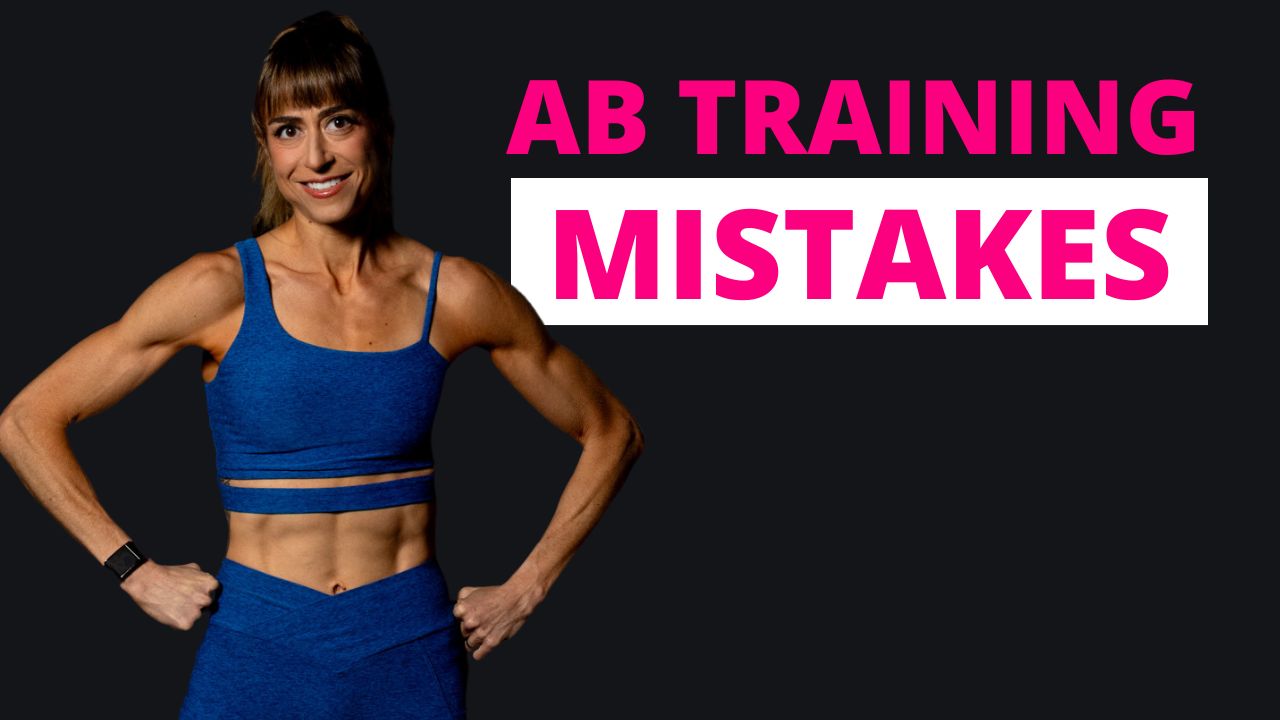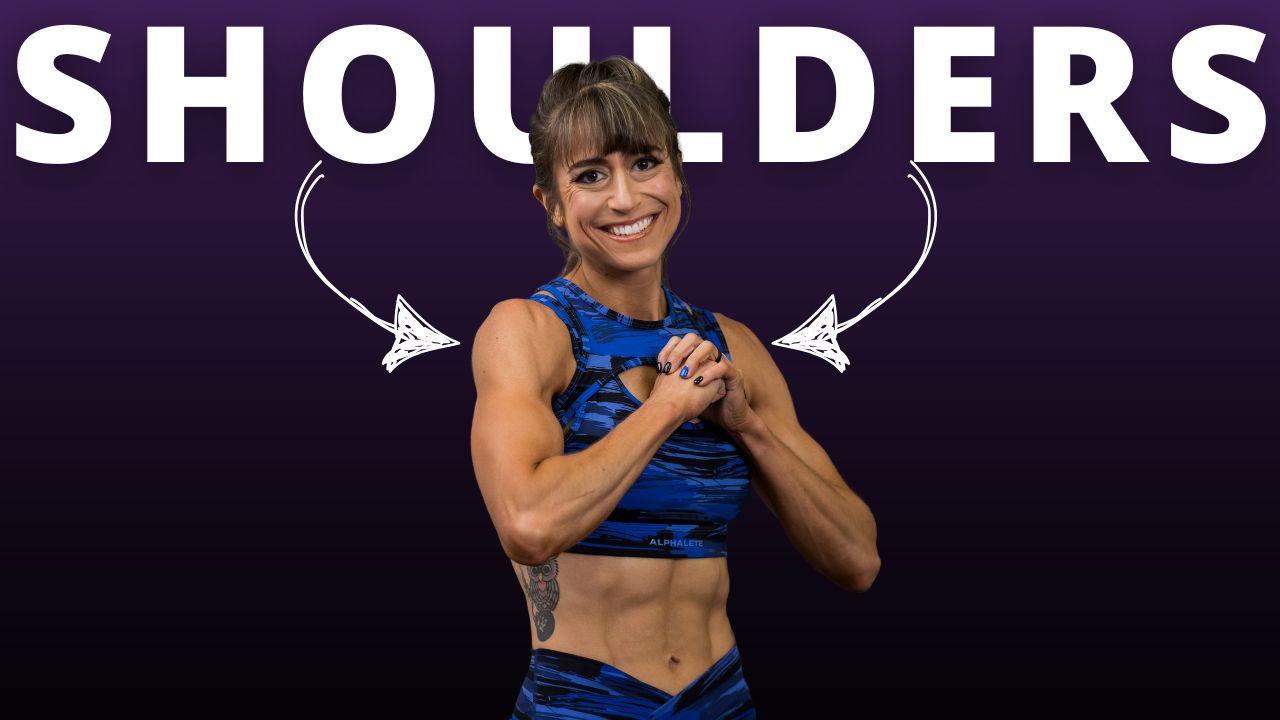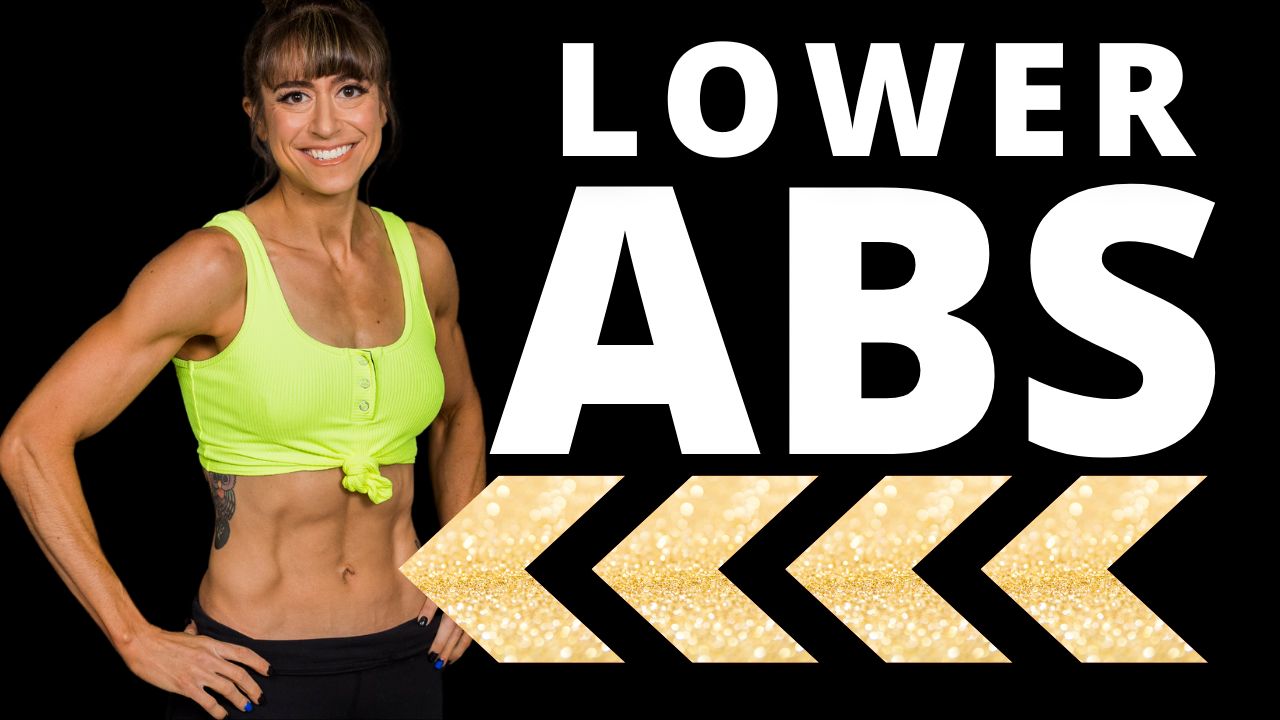
Do You Do This During Ab Workouts? 5 Mistakes You Might Be Making
Feel like your ab workouts aren’t paying off? This video’s your missing link.
Because harder moves don’t mean better results.
We can be doing all the “right” exercises—and still not see the payoff.
Why?
Because we’re compensating. Letting our hips or lower back take over instead of our abs doing the work.
And when that happens, we start to blame the moves—even the ones we should be doing.
We write them off because they cause pain. But it’s not the move. It’s how you’re doing it.
So let’s fix that. Let’s stop the aches and pains. Let’s make sure every rep actually builds the strong abs you’re working for.
Here are 5 common ab training mistakes—and how to fix them.

MISTAKE #1: Doing moves you haven’t earned.
Moves need to fit our current fitness level, needs and goals. When we do exercises we haven’t earned, we end up using the incorrect muscles to power the movements.
This is why we can end up feeling our lower back or hip flexors over our abs working during certain core movements.
Too often we then try to put a bandaid on the issue to power through.
Doing a harder move is better, right?
WRONG!
Regress to progress.
Modifying a move doesn’t mean making it easier on yourself – it means allowing yourself to optimize the exercise.
A prime example of this is putting your hands behind your lower back during leg lower exercises.
Placing your hands under your lower back might feel better in the moment, but it’s not teaching you to properly control the exercise and brace your abs.
Instead of putting your hands behind your lower back to cheat and do a move you haven’t earned, learn to properly brace by regressing to the pelvic tilt hold.
Then build back up.
Learn to truly engage your abs through that tuck of your pelvis toward your ribs. This will protect your lower back and allow you to use your abs to stabilize, even engage your glutes as well.
When you can control this hold, you can then begin to add back in movement, using a pelvic tilt with march.
Then a double knee tuck before building back to a single leg lower and finally the full double leg lower movement.
By building up the right way, you’ll actually work your abs and be amazed at how much stronger they get.
Don’t let ego in doing a harder move hold you back.
MISTAKE #2: Demonizing spinal flexion moves like crunches and sit ups.
Crunches and sit-ups often get written off and even demonized.
But these bodyweight basics work our abs through spinal flexion. Something that planks or big heavy lifts don’t do.
It’s our abs’ job to power that rounding of our spine so we want to include moves that train it.
The key is using these moves correctly so that we don’t rely just on our hip flexors or end up overusing our lower back.
Spinal flexion is about thinking of the curl or roll up of one vertebrae at a time.
Starting out, you may find crunches are easiest to control as they are a more isolated movement. You’re only having to really focus on your abs powering a smaller range of motion to flex your spine and lift through your shoulder blades.
Really focus on your abs curling your upper back off the ground as you press your lower back down into it.
The crunch can really help you focus on that ab activation and mind-body connection because it is so isolated.
Then you can start to move into sit ups, learning to control the full roll up.
Too often with sit ups we just, well, sit up, letting our feet flop around or using momentum, even swinging or arching back overhead when we lay down.
Instead slow things down and think about rounding forward as you reach toward your toes to roll up. Then slowly lowering one vertebra at a time back down
But don’t avoid training this movement pattern. It may not only be the key to getting the amazing strong and defined abs you want (with your diet dialed in of course) but may even help you avoid back pain in your other lifting exercises!
MISTAKE #3: Not focusing on the correct muscles working.
Often we are including many of the “right” core moves, we’re just trying to mimic what we think is proper form and not performing the full exercise or using the correct muscles to power the full movement.
It goes back to mistake #1…we’re trying to do an exercise we haven’t earned so we cheat.
We do leg lowers where we aren’t bracing our abs properly with the posterior pelvic tilt so we’re only really using our hip flexors to lift and lower.
Or we’re doing hanging ab moves and not actually curling our knees toward our elbows by rounding through our spine, we’re only bending and extending at our hips to tuck our knees up.
If you feel your hip flexors working during these reverse crunch or leg raise movements, your hip flexors are what are getting worked. Not your abs.
This perpetuates aches and pains and makes all of our hard work not pay off the way it should.
And even backfire. Because not only can this lead to hip flexor issues, but tight, overworked hip flexors can perpetuate our lower back pain.
Focus on that true spinal flexion. The posterior pelvic tilt is spinal flexion with that tuck of your pelvis toward your ribs.
That curling of your knees toward your elbows as you hang is spinal flexion.
Focus on that movement and regress to progress if you need so you can.
Try an incline ab variation or even lying reverse crunch with overhead hold. But train the proper movement and recruitment pattern.
Don’t just focus on doing the move, focus on what you feel working!
MISTAKE #4: Training to fatigue over using frequency to your advantage.
Have you ever just thought, “I just need to get through the moves!” then rushed through the exercises while tired knowing you were a bit sloppy?
Quality matters. Yet so often we focus on quantity.
We seek to be sore and tired.
Instead of trying to destroy your abs in a workout and do a ton of reps and sets, lower the volume and train them more frequently over the week.
And have a clear set routine you repeat each week, don’t randomly string things together.
While ab exercises can and should be done for higher reps, like 15-25 per set with generally lighter loads if any weight, you still don’t want to focus on just doing 100s of reps in a day.
Spread out that volume over the week. When you are fresher and less fatigued for the moves, you’ll perform a better quality of work.
You may find you are even able to do more advanced variations for all the reps than you could have had you stacked them all together.
And you put yourself at less risk for getting tired and then calling on other muscles to help you power through the moves.
Think about even just a couple of moves done for 2-3 sets 3-4 times a week even.
MISTAKE #5: Focusing on doing more over intensity.
A 2-minute plank where you’re zoning out? Not helpful.
Yet so often we focus on doing more over not only the quality but also the intensity of each rep.
When you’re doing an exercise, focus on really challenging yourself with the movement. Focus on what you feel working and engaging that muscle fully.
With bodyweight movements like the plank, use that mind-body connection to try to engage your abs, and entire core, harder to create shakeage.
Yes shakeage.
Focus on your back supporting your shoulders, bracing that core as if being punched in the gut with that slight posterior pelvic tilt. Flex your quads and drive back hard through your heels.
Don’t let yourself relax during the movement. Create that tension.
Because holding longer while cheating may make your ego feel good, but it isn’t making those abs work more.
We often end up compensating as well, which is why we feel our hips or back the next day even if we didn’t notice during.
It’s not about the clock — it’s about the tension.
You want to feel like you’re barely surviving a 15 second hold the more advanced you are over having ego in just going longer.
You want to use that more advanced ab move, even if you have to pause to complete all the reps.
Shorten the time. Maximize the effort and intensity.
Stop going through the motions with your workouts or letting ego lead to you trying to do moves you haven’t earned.
Regress to progress, focus on that quality of work and be intentional with every move you do!
This will lead to you building the strong abs you want, you can then reveal through proper nutrition!
For amazing workouts to help you build your leanest, strongest body ever, check out my Dynamic Strength program:







